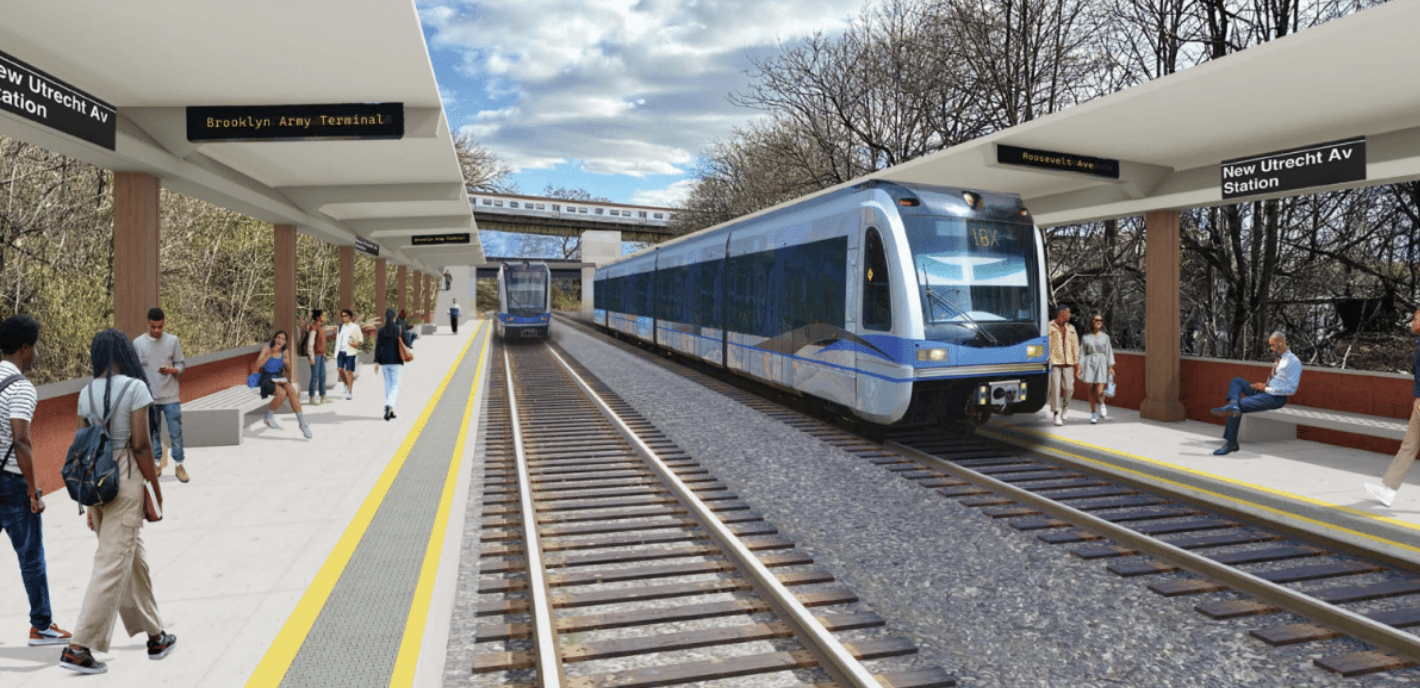By Jacob Kaye
The state’s effort to build the Interborough Express, a new light-rail line from Jackson Heights to Southern Brooklyn, took a major step forward last week when the Metropolitan Transportation Authority began its environmental review of the project.
The environmental review, which will include a series of public hearings, is the first major milestone reached for the IBX since August, when Governor Kathy Hochul launched the start of the engineering and design phase of the ambitious transit proposal, which she began pursuing during her first year in office.
In the end, the environmental review will assess the potential environmental benefits and consequences of building the 14-mile light rail through Queens and Brooklyn.
State officials say that when all is said and done, the $5.5 billion IBX will offer 160,000 daily riders a quicker ride on public transit between the two boroughs. Currently, only the G line is the only train that runs directly from one borough to the other.
The MTA plans to construct the light rail on an existing freight track that’s rarely used, hitting 19 stops along the route that snakes through a number of neighborhoods currently lacking reliable public transportation options.
“The IBX will dramatically improve the commutes of over 160,000 daily riders and we are moving full-speed ahead to keep this transformational project on track,” Hochul said in a statement. “Beginning environmental review is yet another statement of intent that in New York, we don’t just talk about major infrastructure projects, we build them.”
Hochul first proposed the IBX in 2022 during her first-ever State of the State address. Since then, the IBX has become the governor’s signature transit proposal.
But even with support from the state, local officials and transit advocates, the IBX’s future has been called into doubt multiple times.
The project’s financing has been up in the air on a number of occasions. It was first called into question last year when Hochul briefly paused the implementation of the congestion pricing toll in Manhattan. While the project was never meant to be directly funded by the toll, the revenue for congestion pricing factored into a major portion of the MTA’s budget. Without it, the agency needed to scramble to figure out how it was going to spend and make its money.
Questions arose again when the MTA proposed its capital plan earlier this year, with $2.75 billion allocated for the IBX. Around $33 billion of the MTA’s capital plan had not been given an identifiable funding source, and Hochul’s budget announced in January did not include any means to fill those holes. It wasn’t until the governor and state lawmakers agreed to a budget over a month after it was originally due that funding questions about the IBX began to be answered.
The current design phase is primarily funded through a $45 million budget allocation worked into New York’s 2025 budget.
In all, the IBX has been allocated about half the money it will need to be completed.
As part of the environmental review process, the MTA will hold three public meetings in the coming weeks. The first will be held Wednesday, Oct. 29, at Brooklyn College. A second meeting will be held Thursday, Nov. 6, at Christ the King High School in Middle Village. A final meeting will be held virtually on Wednesday, Nov. 12.

